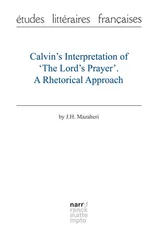Helge Fauskanger - J.R.R. Tolkien’s Lord’s prayer and Hail Mary in Quenya - Syntactical and Etymological Analysis
Здесь есть возможность читать онлайн «Helge Fauskanger - J.R.R. Tolkien’s Lord’s prayer and Hail Mary in Quenya - Syntactical and Etymological Analysis» весь текст электронной книги совершенно бесплатно (целиком полную версию без сокращений). В некоторых случаях можно слушать аудио, скачать через торрент в формате fb2 и присутствует краткое содержание. Жанр: Языкознание, на английском языке. Описание произведения, (предисловие) а так же отзывы посетителей доступны на портале библиотеки ЛибКат.
- Название:J.R.R. Tolkien’s Lord’s prayer and Hail Mary in Quenya: Syntactical and Etymological Analysis
- Автор:
- Жанр:
- Год:неизвестен
- ISBN:нет данных
- Рейтинг книги:5 / 5. Голосов: 1
-
Избранное:Добавить в избранное
- Отзывы:
-
Ваша оценка:
- 100
- 1
- 2
- 3
- 4
- 5
J.R.R. Tolkien’s Lord’s prayer and Hail Mary in Quenya: Syntactical and Etymological Analysis: краткое содержание, описание и аннотация
Предлагаем к чтению аннотацию, описание, краткое содержание или предисловие (зависит от того, что написал сам автор книги «J.R.R. Tolkien’s Lord’s prayer and Hail Mary in Quenya: Syntactical and Etymological Analysis»). Если вы не нашли необходимую информацию о книге — напишите в комментариях, мы постараемся отыскать её.
J.R.R. Tolkien’s Lord’s prayer and Hail Mary in Quenya: Syntactical and Etymological Analysis — читать онлайн бесплатно полную книгу (весь текст) целиком
Ниже представлен текст книги, разбитый по страницам. Система сохранения места последней прочитанной страницы, позволяет с удобством читать онлайн бесплатно книгу «J.R.R. Tolkien’s Lord’s prayer and Hail Mary in Quenya: Syntactical and Etymological Analysis», без необходимости каждый раз заново искать на чём Вы остановились. Поставьте закладку, и сможете в любой момент перейти на страницу, на которой закончили чтение.
Интервал:
Закладка:
Yésus, masc. name: Jesus . As in the case of Maríafor Mary , Tolkien’s "Quenya" form of the name seems to be based on the pronunciation of the Latin form, but spelt according to the normal Roman conventions for the representation of Quenya. The underlying Semitic form (probably something like Yêshû´ , that could have been Quenyarized as * Yéhyu) may not have been considered at all, nor did Tolkien try to render it by its meaning ("Yahweh’s Salvation"). The name is not fully Quenyarized; intervocalic swould normally have become voiced to z, later becoming rin the dialect of the Noldor (e.g. olozi> olorias the plural of olos dream , UT:396; cf. our theory that aire holy , q.v., was originally meant to represent primitive * gaisi). If Yésuswere a true Quenya word, it would have to represent older * Yéþus, since saltered from þnever became z> r(see nísi). But since this is not meant to be an inherited Quenya word, such diachronic considerations are irrelevant; synchronically speaking the Latin pronunciation of Jesus violates no rules of Quenya phonotax, and so it is used here. It would have been interesting to know how Tolkien would have inflected this word, though. Would we have seen * Yésuss-with double sbefore an ending, e.g. genitive * Yésussoor dative * Yésussen? That would follow the pattern of a noun like eques saying , dictum , which becomes equess- before an ending: hence the plural equessiin WJ:392. It is there said that this form is "analogical", evidently suggesting that very many words ending in - sdoubled this sound to - ss- before endings (e.g. nissias the more orthodox plural of nís woman ; see nísi), so new words in - stended to slip into the same pattern. Perhaps this would then also be applied to a borrowed name like Yésus, so that a phrase like "the love of Jesus" would be * Yésusso melme.
5. Summary: New insights on Quenya
In summary we can say that Tolkien’s Quenya rendering of the Lord’s Prayer and Hail Mary provides quite a few new insights, but there are also some mysteries. The strange new "locative" or perhaps "comparative" case exemplified by the words cemendeand Erumandeis probably best ignored by writers until it is better understood: Tolkien’s unpublished writings, if they are eventually made available to scholarship, may throw more light on this form [32] According to VT43, this - de is an allomorph of the regular locative ending - ssë , but I suspect that this shorter ending was not a lasting idea in Tolkien’s ever-evolving conception. For clarity, writers should probably use the full ending - ssë , where necessary inserting a connecting vowel before it.
. The same goes for the preposition (?) hanof uncertain meaning [33] It now appears that han means "beyond", but I think I would stick to the more well-known postposition pella for this meaning.
. Otherwise, the known Quenya vocabulary is enhanced by a whole string of new words, most of which offer no obscurities: aistana blessed , # álaimperative do not , #aranie kingdom , # apsen- forgive (with direct object of the matter that is forgiven, dative object of the person forgiven), as with , etelehta- free , release , * Eruanna grace considered as God’s gift , ilaurëa daily , everyday (adj.), imíca among , # indómenoun will [34] according to VT43:16 indóme means "settled character, also used of the will of Eru"
, mal but , # móna womb , naoptative particle, násie amen! so it is! , the strange form rámen, ? for us , ? on our behalf , síra today , sív[ e] and tambeboth meaning as or like (the former apparently comparing with something that is close, the latter with something remote), tienas the dative of te them , tulya- lead , the three related words # úcare sin , misdeed , úcar- verb sin and # úcarindo sinner , evildoer , # ulcu evil as noun [35] may actually be ulco , ulcu -
, # úsahtie temptation . There is also nísias an unorthodox plural of nís woman ; the plural nissifound in other sources (both earlier and younger than the text before us) is probably to be preferred.
More than ten of the words above cover meanings for which we had no Quenya translation before. Some of these words may, on closer scrutiny, yield further vocabulary items: if we have correctly analysed násieas (so) is this , we may isolate a word # sie this referring to a situation (e.g. * i Elda carne sie the Elf did this ); the word sinaknown from the phrase vanda sina this oath in Cirion’s Oath (UT:305, 312) may be adjectival only, modifying another word but not necessarily occurring by itself as in "the Elf did this" [36] According to VT43, sie may actually be an adverb "thus"; this word certainly has this meaning in a later source. However, sie = "thus" would also be a highly useful word that writers have often missed. Sie could also be used to translate "so". – As for "this", it is possibly that sin is used by itself and sina as an adjectival modifier: Elda sina carnë sin , "this Elf did this".
.
This text confirms what the word massánie bread-giver in PM:404 suggests: in the fifties, Tolkien had decided that the Quenya word for bread was to be # massaand not as in earlier sources masta. Of course, both forms could very well coexist in the language, but in the Etymologies , mastais both a noun bread and a verb bake (LR:372 s.v. mbas-). Writers can now use mastafor bake and # massafor bread , avoiding the ambiguous forms.
Some words are of particular value to writers. Imícaas an unambiguous word for among is a welcome addition to our vocabulary; so far writers have had to resort to imbë between , but that is not quite the same. The new word malfor but fills no gap in our vocabulary, since we already had nan(or nán, ná), but
malis perhaps to be preferred: For one thing it occurs in a source that is certainly younger than the sources that provide these other words for but , and as we have argued, malmay be less ambiguous than the alternatives (including the form nóthat turned up in VT41:13, since according to LR:379 s.v. nowo- nóis also a noun conception , and in one sentence nóeven seems to be a preposition before – see VT41:18). The verb tulya- lead is also useful; until now we have only had tulta- summon , and though both words basically mean "make come" the latter form had the limitation that it only referred to movement towards the place of the speaker. Another highly useful word is asfor with in the sense together with . So far it has been somewhat unclear what the Quenya for with really is. I have used and recommended yo; in WJ:407 it occurs as a prefix in the word yomenie(read * yomentie?) meeting , gathering (of three or more coming from different directions). We seem to have an independent attestation of yoin SD:56, in one of the draft variants of Elendil’s Oath: yo hildinyar, perhaps meaning * with my heirs (the final version in LotR – volume 3, Book Six, chapter V – simply reads ar hildinyar, and my heirs ). Though I think yomay indeed be one Quenya word for with , at least at certain stages of Tolkien’s ever-evolving vision, the new word asis certainly the best option for expressing this meaning now. (Moreover, yomay be ambiguous since this is conceivably also the genitive of ya which , hence * yo= of which , whose . The locative yassen wherein , in which occurring in Namárië demonstrates that the relative pronoun yamay receive case endings.)
Читать дальшеИнтервал:
Закладка:
Похожие книги на «J.R.R. Tolkien’s Lord’s prayer and Hail Mary in Quenya: Syntactical and Etymological Analysis»
Представляем Вашему вниманию похожие книги на «J.R.R. Tolkien’s Lord’s prayer and Hail Mary in Quenya: Syntactical and Etymological Analysis» списком для выбора. Мы отобрали схожую по названию и смыслу литературу в надежде предоставить читателям больше вариантов отыскать новые, интересные, ещё непрочитанные произведения.
Обсуждение, отзывы о книге «J.R.R. Tolkien’s Lord’s prayer and Hail Mary in Quenya: Syntactical and Etymological Analysis» и просто собственные мнения читателей. Оставьте ваши комментарии, напишите, что Вы думаете о произведении, его смысле или главных героях. Укажите что конкретно понравилось, а что нет, и почему Вы так считаете.












